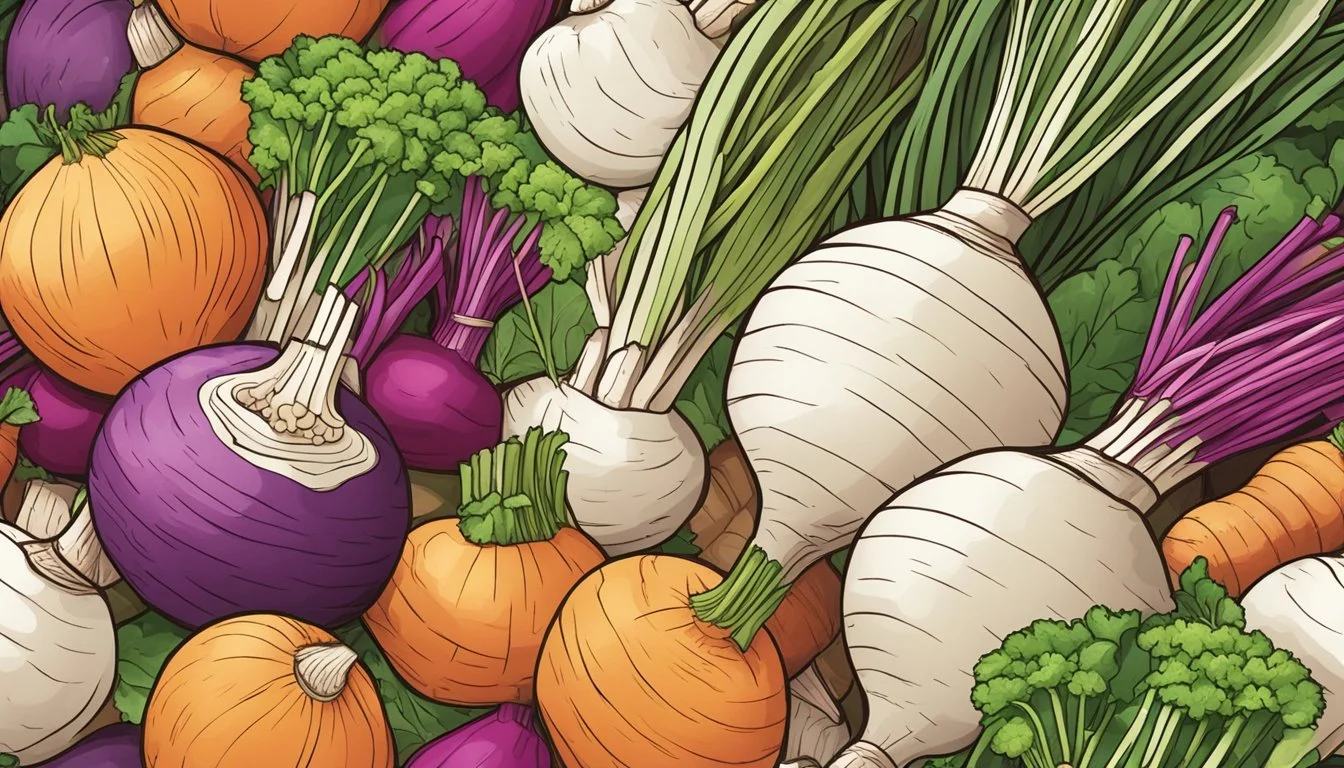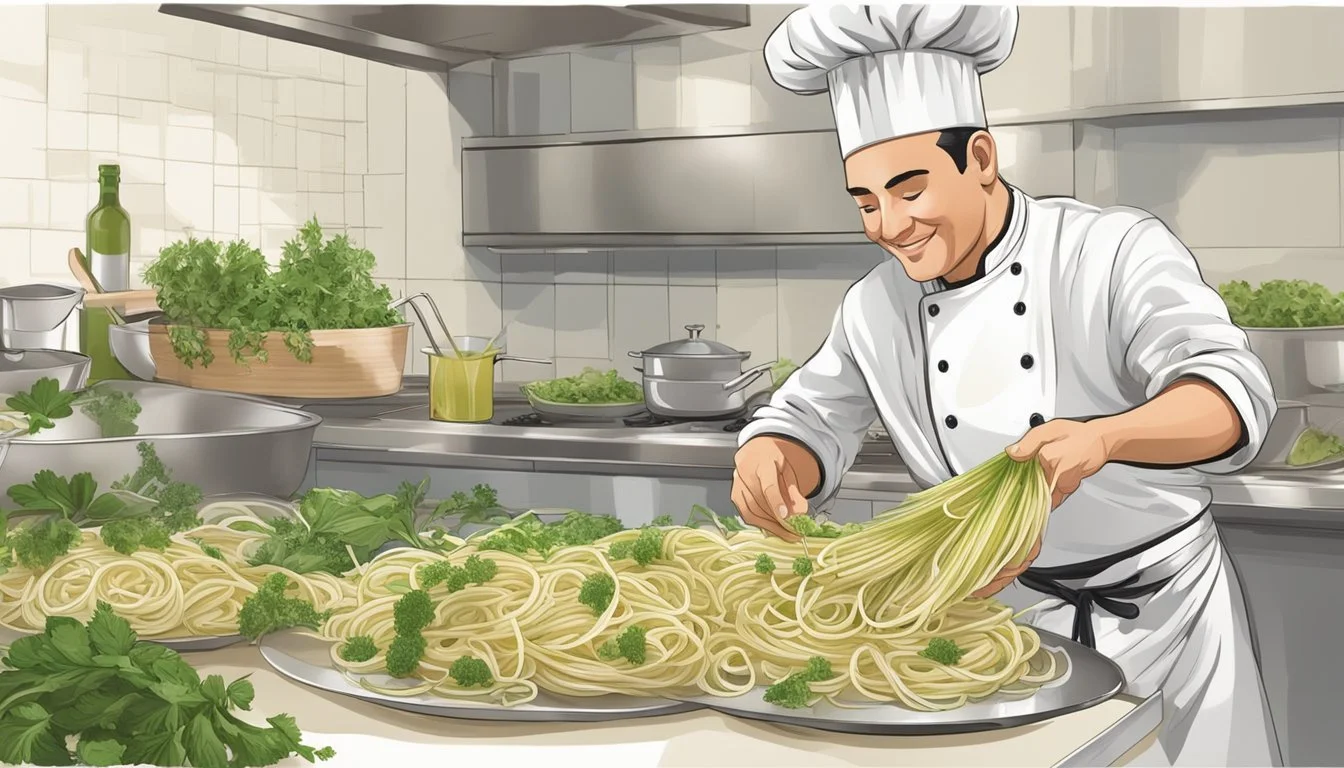Turnip Noodle Substitutes
Top Alternatives for Low-Carb Pasta
Turnips, the versatile root vegetables with a peppery taste, have been a staple in kitchens for centuries. While they are nutritious and can be a healthy addition to any diet, there are times when one might need to find a substitute for turnips in their recipes. Finding an alternative that maintains the integrity of the dish while offering a similar texture and flavor profile is crucial, especially for those looking to keep their meals healthy and balanced.
Many vegetables can step in as turnip substitutes without compromising on the dish's nutritional value. Swedes or rutabagas, closely related to turnips, provide a slightly sweeter taste and can be used in most recipes that call for turnips. Other options include celery root, which adds a mild, earthy flavor, and starchy vegetables like potatoes that bring a different texture but still pair well with a range of seasonings and cooking methods.
The art of substituting turnips is not just about mimicking their flavor but also ensuring that the substituted vegetable complements the other ingredients in the recipe. Root vegetables are often the best candidates due to their similar texture and the way they carry other flavors. Each potential substitute brings its own unique taste and benefits, so selecting the appropriate alternative depends on the desired outcome of the dish.
Understanding Turnips
When exploring turnip noodle substitutes, one must first appreciate the attributes of the turnip itself, which include its nutritional benefits, diverse culinary applications, and the unique texture and flavor it brings to dishes.
Nutritional Profile
Turnips are a root vegetable that are notably low in calories and fat while being rich in dietary fiber. They provide a range of essential nutrients with a significant content of Vitamin C, which is vital for immune function and skin health.
Nutrients per 100g of Turnip:
Calories: 28 kcal
Fat: 0.1 g
Fiber: 2.3 g
Vitamin C: 21 mg
Culinary Uses
They are a versatile vegetable in the kitchen. Chefs incorporate them into a variety of recipes ranging from roasted dishes and stews to being pickled or served raw in salads. Their ability to absorb flavors makes them a valuable addition to any meal, and they can be transformed into noodles for a healthier alternative to traditional pasta.
Texture and Flavor Characteristics
The texture of turnips can be described as firm and fibrous, providing a satisfying bite that mimics the al dente quality of pasta when cut into noodle shapes. Flavor-wise, they have a mildly spicy taste which becomes sweeter when cooked. This balance of flavor allows turnips to complement a wide array of ingredients.
Selecting Turnip Substitutes
When looking for alternatives to turnip noodles, one should consider the texture and flavor profile desired in the final dish. The substitutes must offer similar attributes to ensure the culinary experience remains authentic.
Criteria for Substitution
The ideal substitute for turnip noodles should mimic their firmness to hold up against the cooking process, and possess a complementary taste. The health aspect cannot be overlooked; a good substitute should also align with the nutritional benefits turnips provide, such as being a source of dietary fiber and essential vitamins.
Flavor: A mild, slightly sweet taste is preferable.
Texture: Should be robust enough to withstand spiralizing and cooking without falling apart.
Nutrition: Should offer similar health benefits, like being low in calories and rich in nutrients.
Substitution Based on Cooking Method
When choosing a substitute based on cooking method, the key is to match textures and tastes appropriate for the method, such as boiling or baking.
Boil: Rutabaga and celeriac are excellent for dishes requiring boiled turnip noodles, as they soften similarly and maintain a pleasant texture.
Bake: Parsnips can be a suitable choice for recipes that involve baking, providing a sweet, earthy note akin to turnips.
| Cooking Method | Recommended Substitute | Reason |
|----------------|------------------------|---------------------|
| Boil | Rutabaga, Celeriac | Holds texture well |
| Bake | Parsnips | Gains a sweet note |One should also consider the shrinkage and moisture release of the chosen substitute while cooking, to ensure the final dish has the desired consistency.
Root Vegetable Alternatives
Selecting a suitable root vegetable alternative can enhance your dish with flavors and textures that are similar to turnip noodles.
Rutabaga and Swede
Rutabagas and swedes offer a slightly sweet and earthy taste, making them excellent for noodle dishes. Rutabaga, also called 'swede' in some regions, closely mimics the texture of turnip noodles when spiralized.
Parsnip and Parsley Root
Parsnips resemble a creamy white carrot and lend a sweet and slightly nutty flavor as turnip noodle substitutes. Parsley root, similar to parsnip with a hint of parsley flavor, can also be transformed into appealing noodle shapes.
Celeriac and Kohlrabi
Celeriac, also known as celery root, has a subtle celery flavor and sturdy structure, ideal for creating firmer noodles. Kohlrabi, with a milder taste profile, can replace turnip noodles in a variety of recipes without overpowering other ingredients.
Carrot and Sweet Potato
Carrots, with their distinct sweet flavor, are widely available and can make vibrant noodle substitutes. Sweet potatoes provide a colorful and nutritious alternative, offering a slightly sweet and starchy option for noodle substitution.
Root Vegetable Flavor Noodle Texture Nutritional Value Rutabaga Earthy, Mildly Sweet Close to Turnip High in Fiber, Vitamin C Parsnip Sweet, Slightly Nutty Soft, Pliable Rich in Potassium, Fiber Celeriac Subtle, Celery-Like Firm, Sturdy Good Source of Vitamin K Kohlrabi Mild, Slightly Sweet Crisp, Tender Low in Calories, High in Vitamin C Carrot Sweet, Fresh Crunchy, Delicate High in Beta-Carotene Sweet Potato Sweet, Starchy Soft, Holds Shape Packed with Vitamin A, Vitamin C
Non-Root Vegetable Alternatives
When seeking turnip noodle substitutes, there are non-root vegetable options that can provide a similar texture and versatility in vegetable dishes. These alternatives are from the cabbage family and include other unique options such as jicama and radish.
Cabbage Family Options
The cabbage family presents a versatile substitute with varieties such as Napa or Savoy cabbage. These types of cabbage can be thinly sliced to mimic the shape and noodle-like appearance of turnip noodles. They offer a subtle, sweet flavor that pairs well with a myriad of dishes. When blanched, cabbage can become pliable, making it a suitable alternative for turnip in recipes requiring a softer texture.
Napa Cabbage: Best when used in Asian-inspired recipes.
Savoy Cabbage: Preferred for its crinkled leaves and tender texture.
Jicama and Radish
Jicama serves as a crunchy, mildly sweet turnip alternative with a texture that remains crisp even when cooked. It can be julienned into strips to create a noodle-like component for salads and stir-fries, retaining its structural integrity well.
Texture: Firm and crisp
Flavor: Slightly sweet and nutty
Radishes, particularly daikon radishes, can be spiralized or sliced into thin strips, offering a peppery kick that complements savory dishes effectively. When used in place of turnip noodles, they add a spicy note and a satisfying crunch.
Texture: Crisp with a snappy bite
Flavor: Peppery and zesty
Both jicama and radishes are excellent in bringing both texture and flavor to vegetable dishes as a turnip alternative. They fit into the repertoire of a confident, health-conscious cook exploring beyond the usual root vegetables.
Using Turnip Substitutes in Meals
When one wishes to diversify their meals or accommodate dietary preferences, the use of turnip substitutes in soups, salads, and side dishes can be an excellent way to maintain flavor and texture. These alternatives are readily available and can integrate seamlessly into a variety of recipes.
Incorporating into Soups and Salads
In soups, swede, also known as rutabaga, offers an earthy and mildly sweet taste that can stand in for turnips. Its sturdiness holds up well during cooking, making it an ideal addition to hearty broths and stews. For salads, jicama is favored for its crunchy texture and mild sweetness, adding both nutritional value and a refreshing twist. Swede and jicama can be prepared as follows:
Swede: Peel and cube for soups, simmer until tender.
Jicama: Peel and julienne or dice for crisp salad inclusion.
Salads gain not only diverse textures with these substitutes but also an array of vitamins and minerals.
As a Side Dish
As a side dish, alternatives like parsnips and potatoes provide a comforting and familiar flavor profile. They can be transformed into enticing dishes that parallel turnip applications with ease. For roasted or mashed presentations, these substitutes perform exceptionally well:
Substitute Preparation Method Flavor Profile Parsnips Roasted with herbs Sweet, slightly nutty Potatoes Mashed with butter Creamy, neutral
These substitutes maintain the essence of traditional turnip side dishes while contributing their own distinct flavors and textures. By choosing the right turnip alternative, one can elevate the taste and experience of the meal.
Health and Nutrition
When considering turnip noodle substitutes, one's health goals often center around finding options that are low in calories and rich in nutrients such as fiber and protein.
Low-Calorie Options
Turnip noodles themselves are an excellent low-calorie alternative to traditional pasta. They, along with other spiraled vegetables like zucchini, carrots, and cucumbers, are significantly lower in calories than standard noodles. For example:
Zucchini noodles: Approximately 20 calories per cup
Carrots noodles: Close to 50 calories per cup
Cucumber noodles: Roughly 16 calories per cup
These substitutes offer a way to enjoy a pasta-like dish without the high calorie count associated with traditional pasta.
High-Fiber Alternatives
Fiber is essential for a healthy digestive system and can aid in weight management. If one is seeking high-fiber options, certain vegetable noodles stand out.
Turnip noodles: About 2 grams of fiber per cup
Beet noodles: Offer around 2 grams of fiber per cup
In addition to these, noodles made from cauliflower, although not typically spiralized, can be created by finely grating cauliflower florets providing a substitute that is not only high in fiber but also rich in vitamins and antioxidants. This makes it a healthy and nutritious option for pasta dishes.
Culinary Techniques and Tips
When preparing turnip noodle substitutes, a chef's approach towards flavor enhancement and texture achievement is crucial for creating a satisfying dish.
Enhancing Flavors with Herbs and Spices
To elevate the flavors of turnip noodle substitutes, chefs often incorporate various herbs and spices. Rosemary is a robust herb that can impart a pine-like aroma and a slightly lemony pine flavor, making it an excellent complement to root vegetables.
Table: Common Herbs and Spices for Flavor Enhancement
Herbs/Spices Flavor Notes Suggested Pairing with Substitutes Rosemary Pine-like, lemony Roasted or sautéed turnip substitutes Thyme Earthy, subtle Steamed or baked turnip substitutes Oregano Bold, peppery Turnip noodle salads Basil Sweet, fresh Fresh turnip noodle dishes Olive oil Fruity, peppery As a dressing or for sautéing
In the culinary world, olive oil is not only valued for its flavor but also for its ability to carry and blend the flavors of herbs and spices, thereby enhancing the overall taste profile of the dish.
Achieving Desired Texture
The texture of turnip noodle substitutes should be tender yet firm, mimicking the 'al dente' quality of traditional pasta. The following methods can help achieve the right texture:
Steaming: Cooks the noodles uniformly, preserving some firmness.
Sautéing: Provides a slightly crisp exterior while keeping the inside tender.
Boiling: Offers a softer texture, recommended for shorter cooking times.
By controlling the cooking time and method, chefs can tailor the texture to suit various recipes and individual preferences.
Conclusion
In identifying suitable substitutes for turnip noodles, one must consider both taste and textural compatibility with the original ingredient. Swede (or rutabaga), closely related to turnips, stands out as a favorable alternative, often preferred for its earthy sweetness and similar appearance. Another robust option is parsnips, providing a subtly sweet flavor while maintaining a noodle-like consistency when spiralized.
Substitute Flavor Profile Texture Swede Mildly sweet Firm Parsnip Sweet Crisp Jicama Mildly sweet Crunchy Carrots Sweet Crisp
One should not overlook jicama, known for its starchy yet mildly sweet taste, which can be ideal in cold salads. Meanwhile, carrots can serve as a turnip alternative, offering a pleasant sweetness and crisp texture, diverging slightly from the more peppery note of turnips.
It’s imperative to select an alternative that harmonizes with the dish’s flavor profile. While these substitutes bear distinctions from turnips, each can adeptly fulfill a culinary need in the absence of the primary vegetable. Culinary adaptability ensures that dishes retain their intended complexity and appeal, even with such replacements. Whether for dietary restrictions, availability concerns, or mere curiosity in experimentation—cooks can confidently utilize these turnip alternatives to craft enjoyable and nutritious meals.








